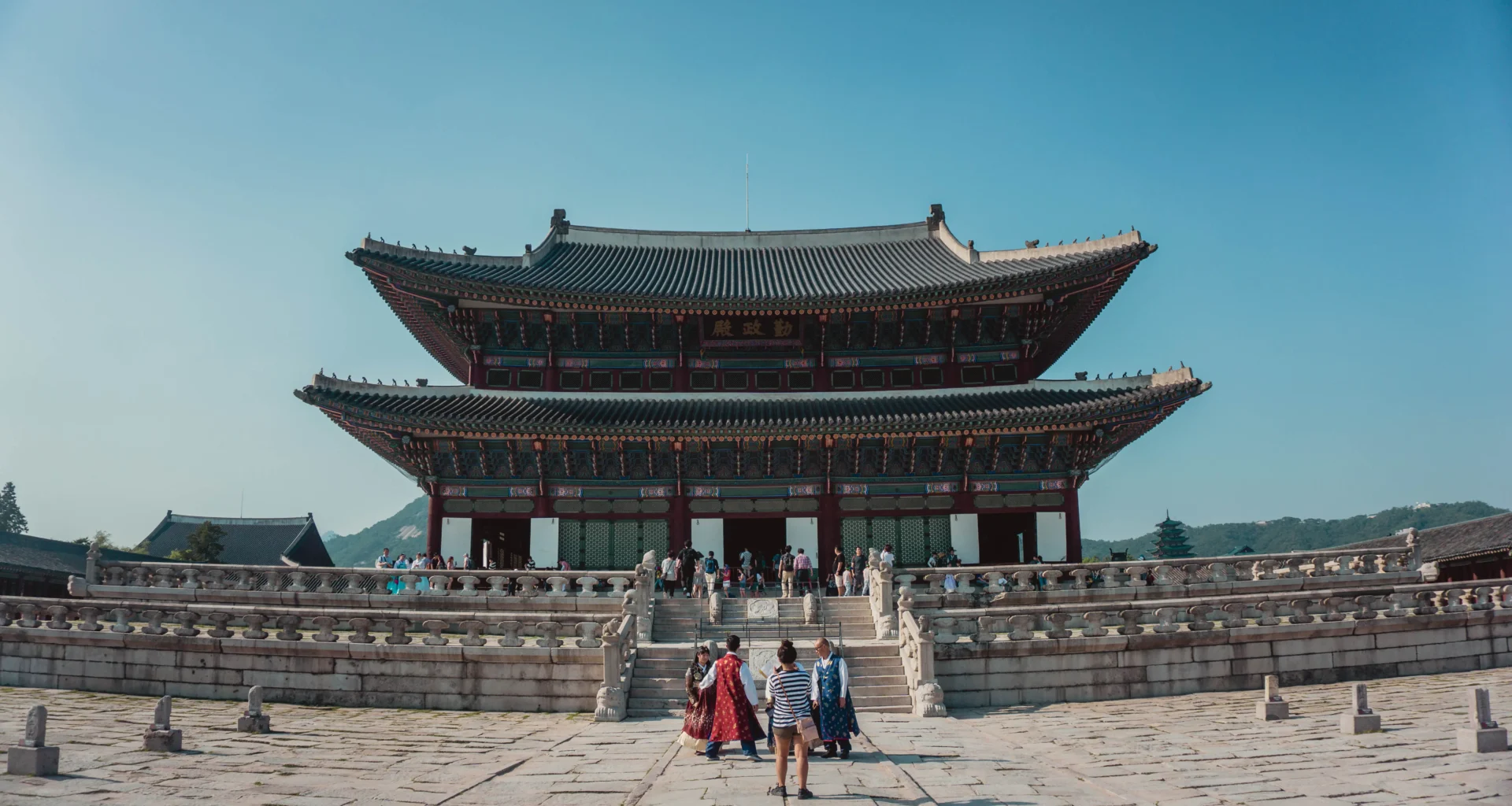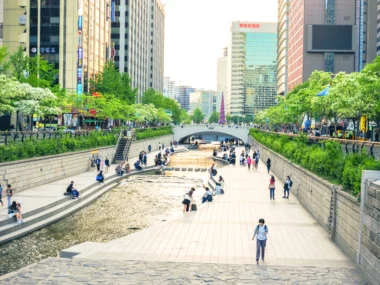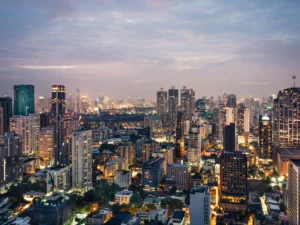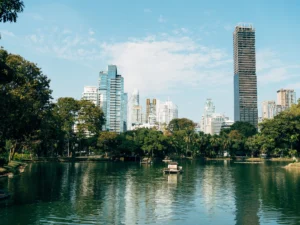Gyeongbokgung, or Gyeongbok Palace, is one of Seoul’s five Grand Royal Palaces, built during the Joseon Dynasty. It is now one of the must-see places to visit in Seoul. Here is everything you need to know to visit Gyeongbokgung (tickets, changing of the guard, schedules, unmissable things, the best time to visit) to appreciate the beauty of this magnificent palace even more!
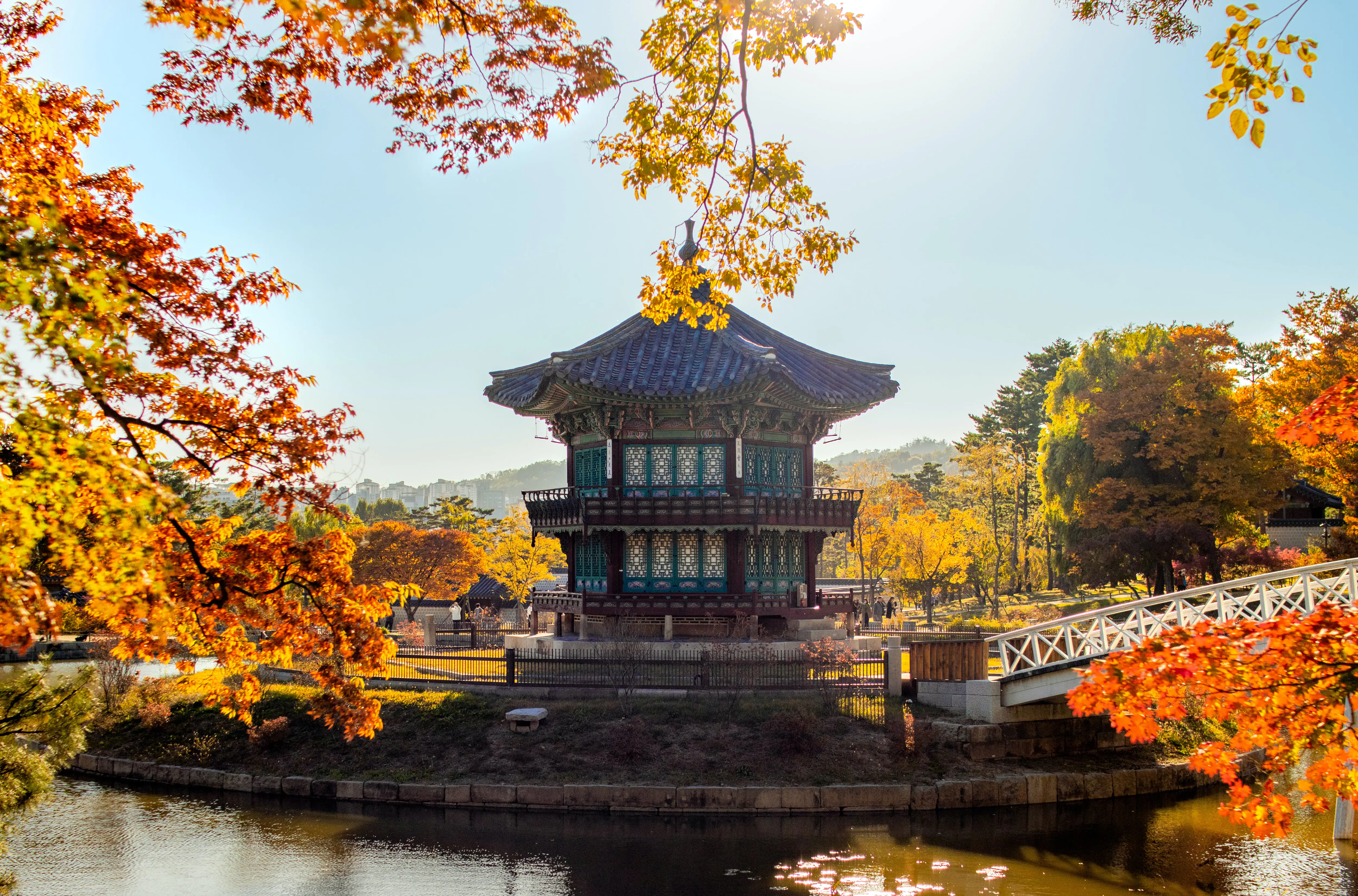
10 Tips and Tricks for Visiting Gyeongbokgung Palace
- Gyeongbokgung Palace is open daily except Tuesdays or other special events.
- If you visit Gyeongbokgung in traditional Korean dress (hanbok), the palace’s entrance is free! This trick also works for all other palaces in Seoul.
- Try not to stay too long at the palace’s main entrance. Gyeongbokgung is vast, and there are plenty of other places to discover with far fewer people around.
- The best time to visit Gyeongbokgung Palace is on weekdays, except Tuesday (when the palace is closed) and possibly Monday (when all other royal palaces in Seoul are closed).
- If you visit other royal palaces in Seoul, take the pass instead of the unit ticket. The pass includes four royal palaces and Jongmyo Shrine.
- During your visit, do not miss the Royal Library (Jibokjae). It is one of the only places where you can visit the interior of a building.
- Pass by the ponds of Gyeongbokgung. These are wonderful places to see!
- Visit the National Folk Museum of Korea at the Gyeongbokgung East Entrance/Exit. Free entry.
- There are no places to eat or drink inside the palace territory. If you visit Gyeongbokgung in the summer, take a small water bottle.
- Due to its impressive size, Gyeongbokgung Palace has a less intimate side than other royal palaces. If you are unsure which Seoul palaces to choose for your tours, read our blog post: Seoul Royal Palaces.

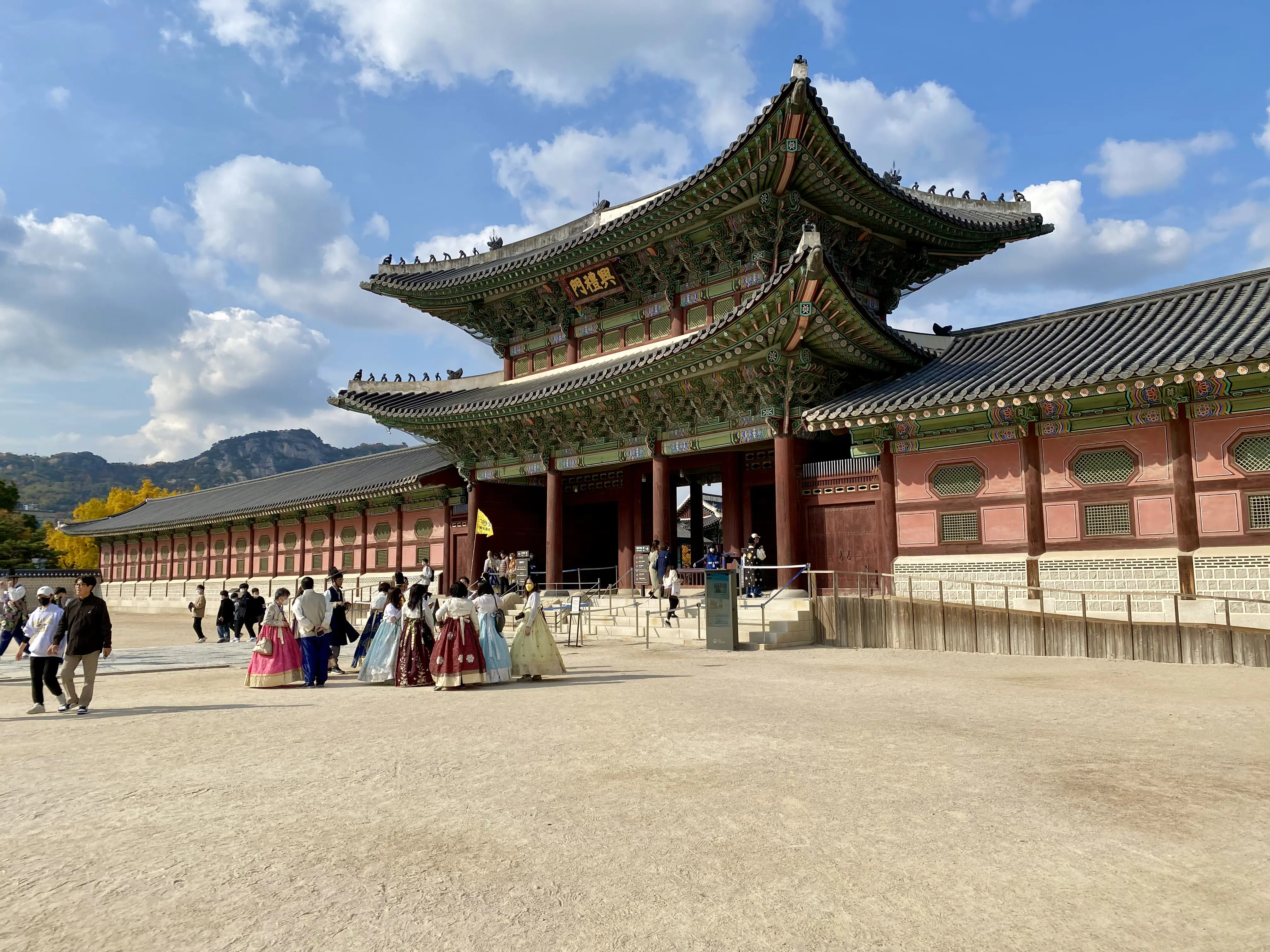

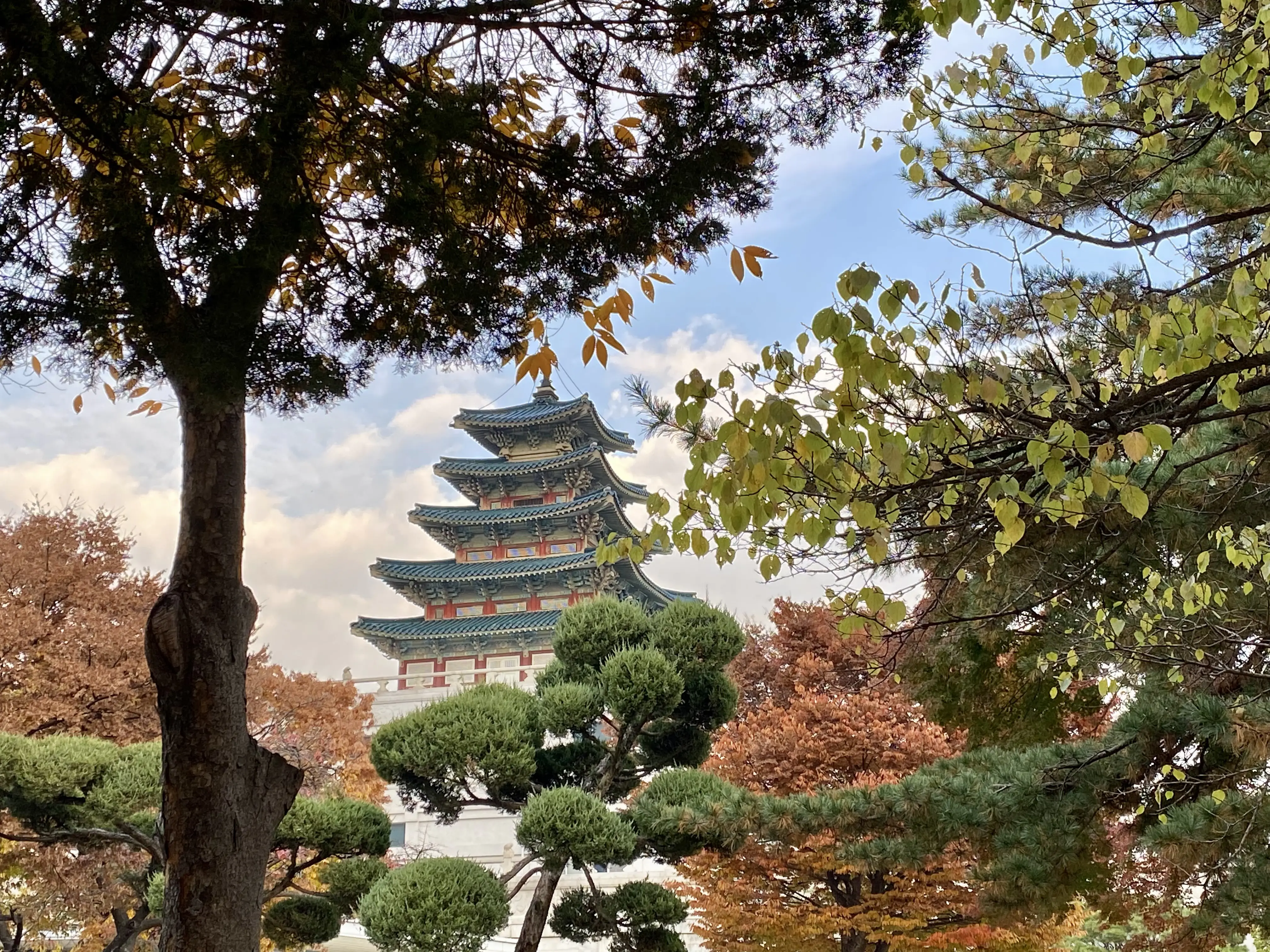
See the Changing of the Guard at Gyeongbokgung Palace
If you want to watch the Changing of the Guard ceremony, plan to visit Gyeongbokgung Palace at 10 a.m. or 2 p.m. (except Tuesday, when the palace is closed). It is a highlight of visiting Gyeongbokgung.
You can also see the Changing of the Guard at Seoul’s Deoksugung Palace.
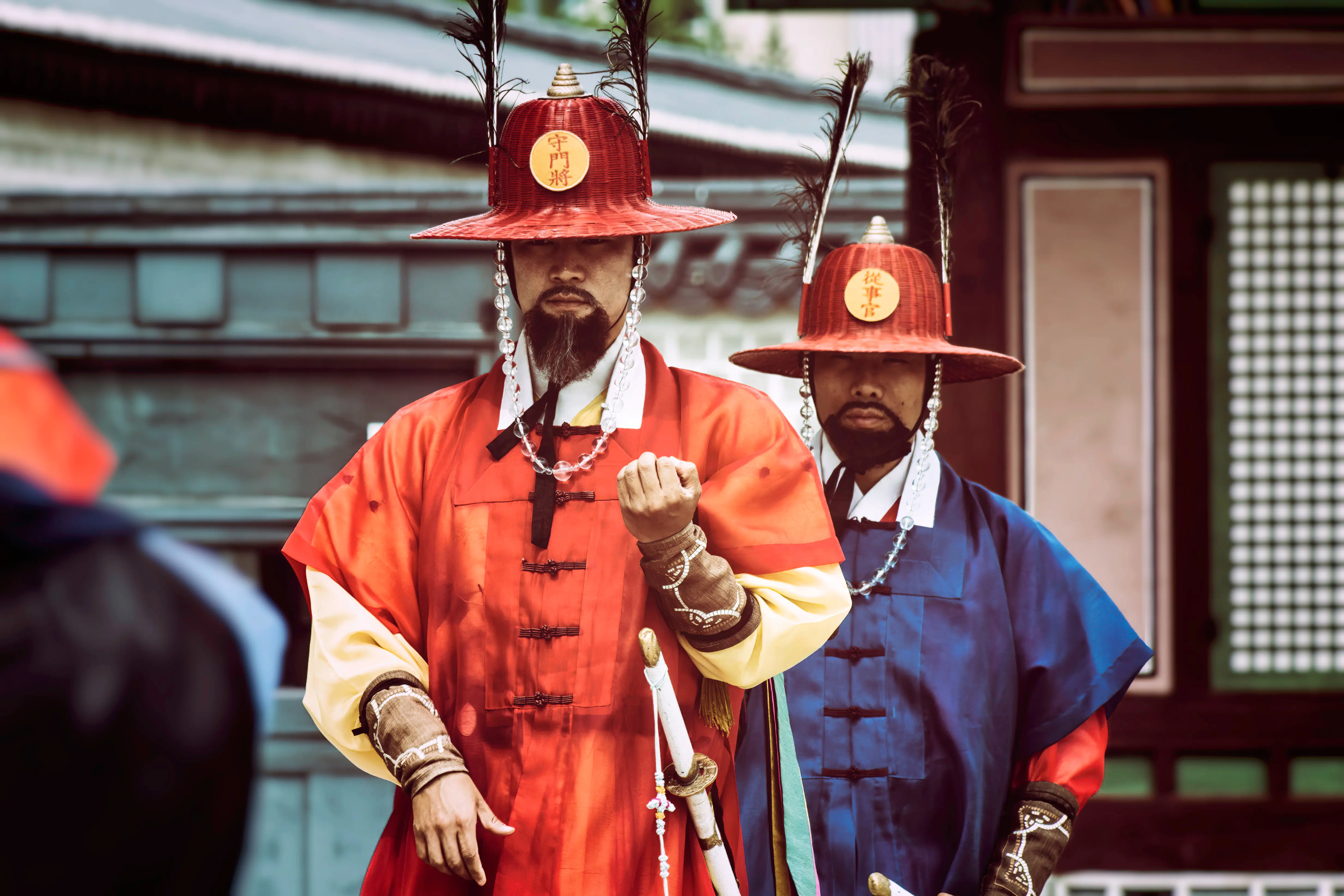
How long does it take to visit Gyeongbokgung?
Plan to spend 2 to 3 hours visiting Gyeongbokgung Palace. It is huge: its area is 432,703 m2. To go around the palace, you must walk about 3-4 km, about 5000 steps. Therefore, it is preferable to put on comfortable shoes to make this visit more pleasant.
Tickets to visit Gyeongbokgung in Seoul
You can buy entrance tickets to Gyeongbokgung Palace directly on-site. However, during the peak tourist season (spring and autumn), checkouts may have a queue. To save time, you can also use automatic checkouts.
Don’t be surprised: Korean citizens get a discount on entrance tickets to Gyeongbokgung Palace and the other palaces. The price of tickets for foreigners is higher.
There is a pass that includes the 4 royal palaces and Jongmyo Shrine. This pass is interesting only if you are going to visit several palaces in Seoul. Thanks to the pass, the price of the entrance ticket to Gyeongbokgung will cost you less. You can buy it at the checkouts of each palace, not just in Gyeongbokgung. Visually, the pass corresponds to a bundle of tickets, one ticket for each location.
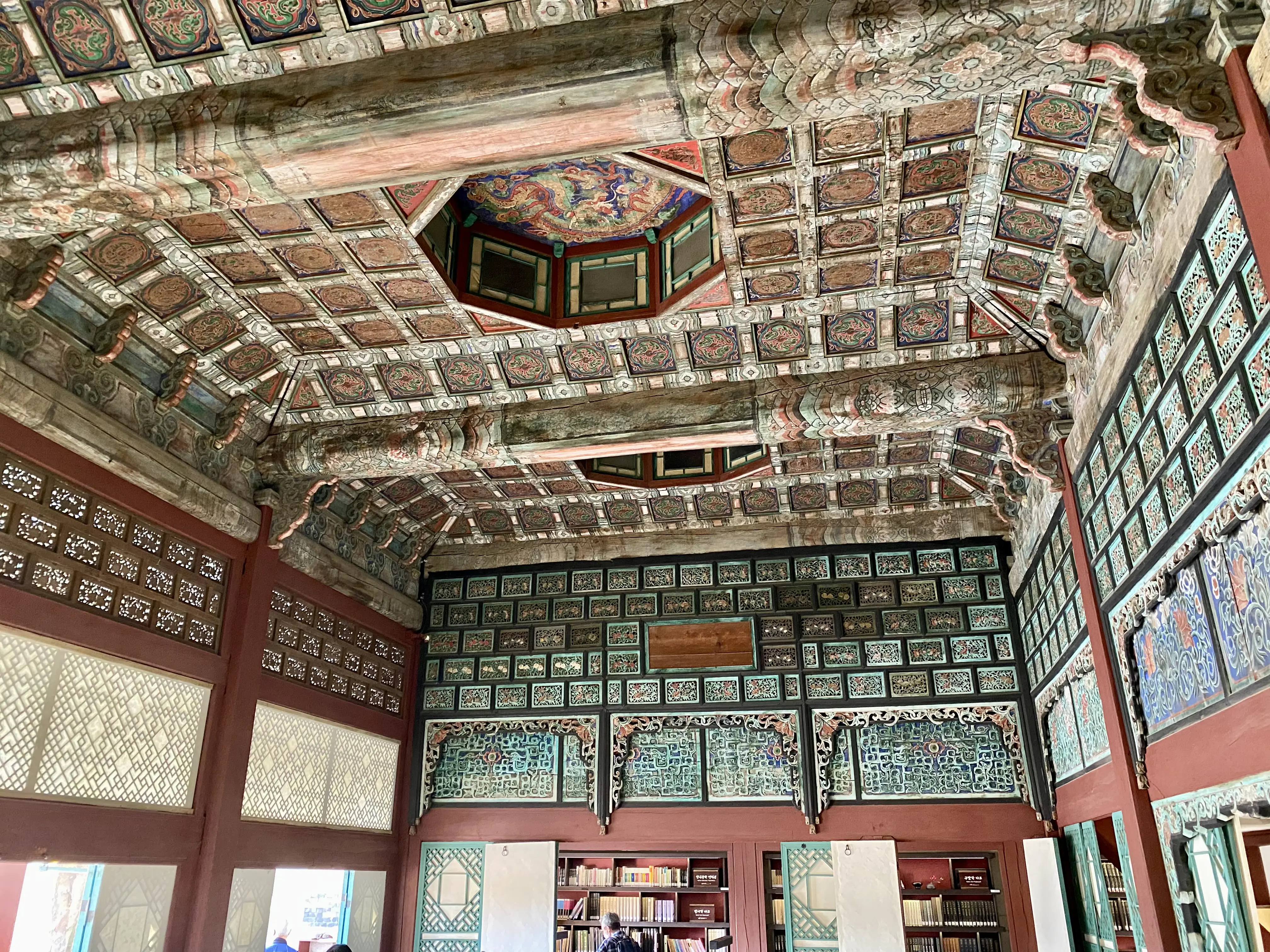
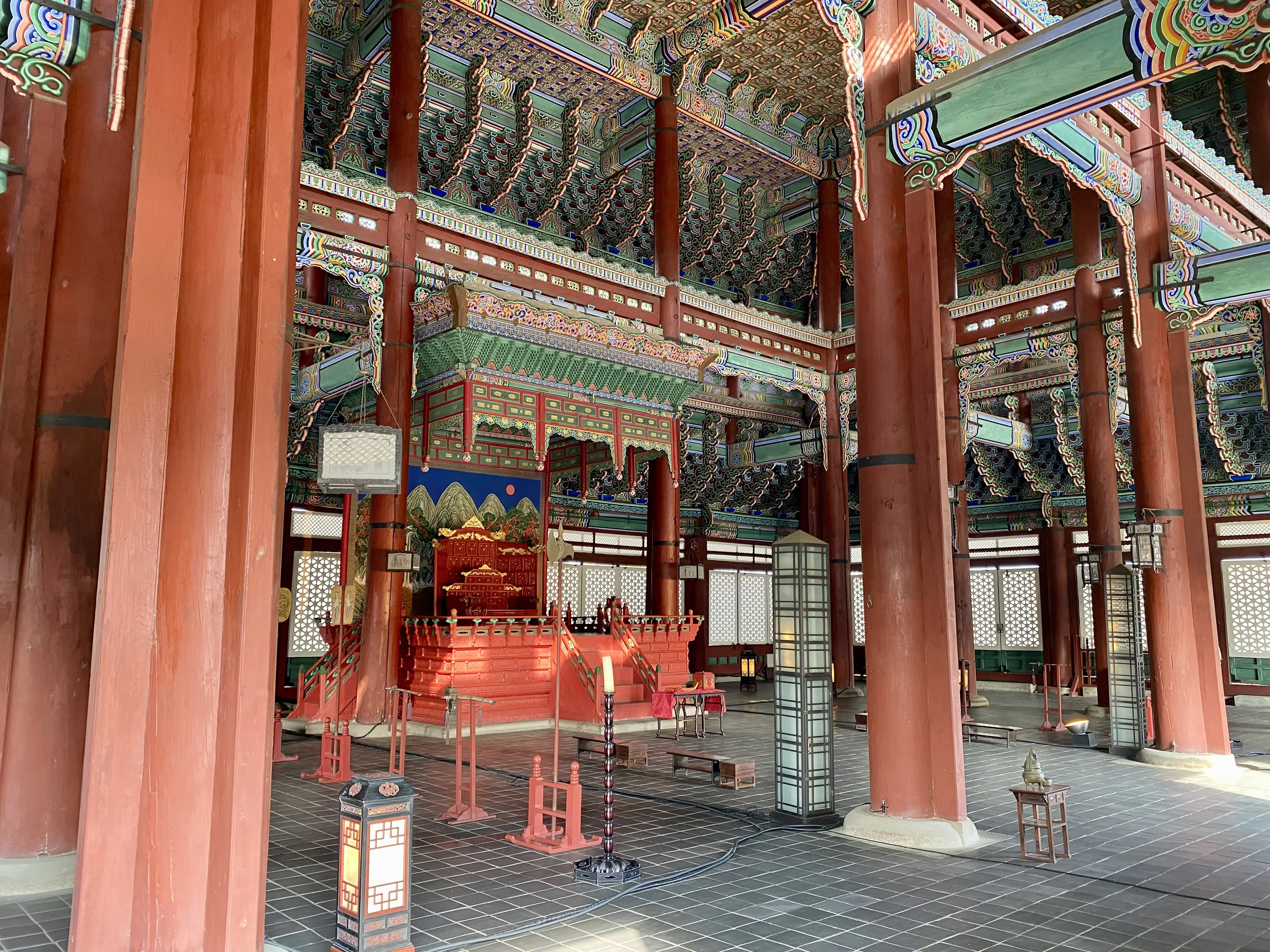
Visit Gyeongbokgung for free
If you want to visit Gyeongbokgung Palace for free, it is possible if you are dressed in traditional Korean attire! This outfit is known as a hanbok. Incidentally, all palaces in Seoul offer free entry to people wearing hanbok. But where do you find these outfits?
In Seoul, and especially near the royal palaces, you will see many shops that offer rental of traditional Korean outfits. As for Gyeongbokgung, this is also the case. If you enter the palace through the main entrance, you will find these shops north of the Gyeongbokgung subway station (e.g., Seohwa Hanbok). And if you enter at the East entrance, you will find some on Samcheong-ro Street (e.g., ABC Hanbok).
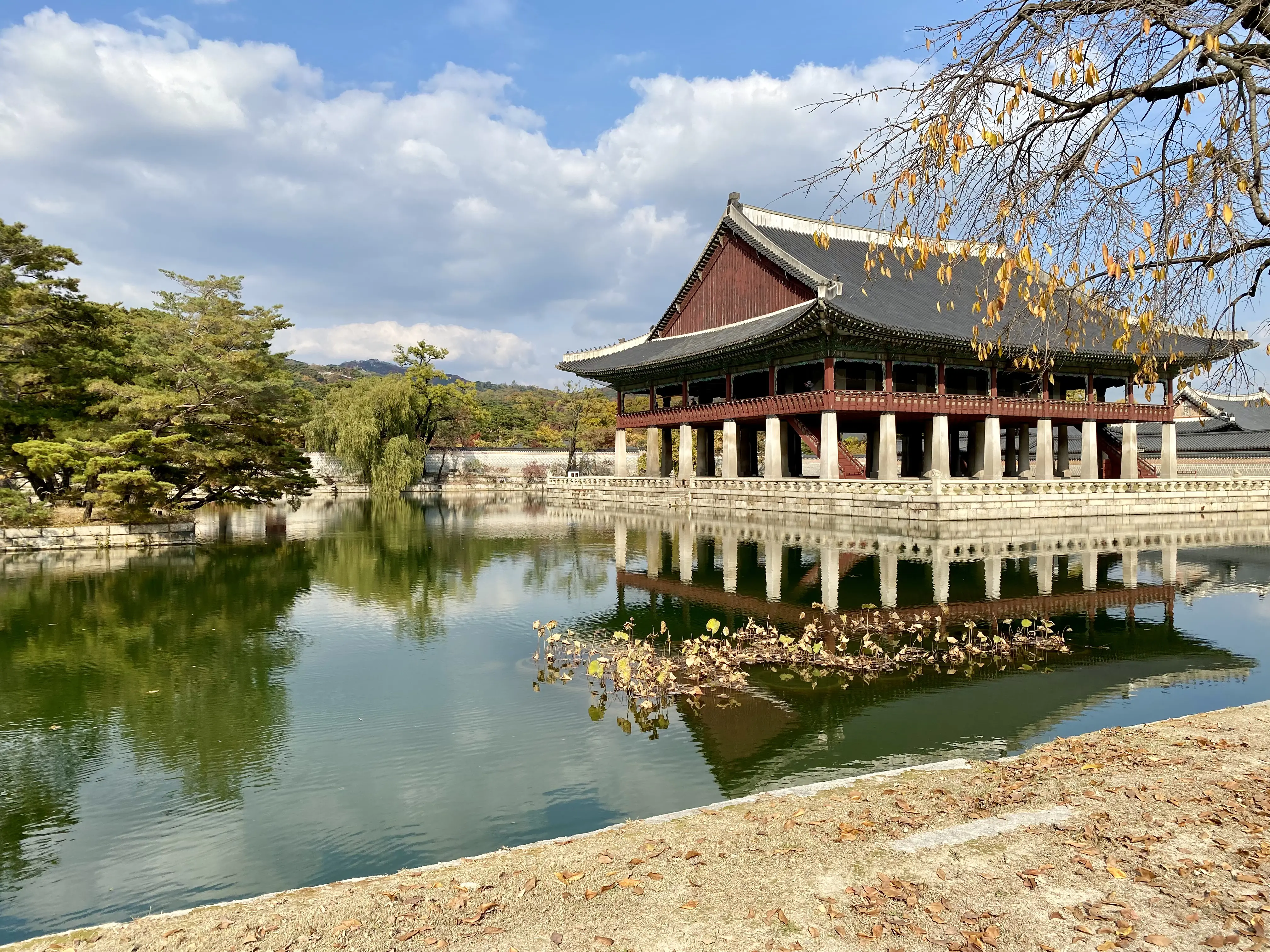
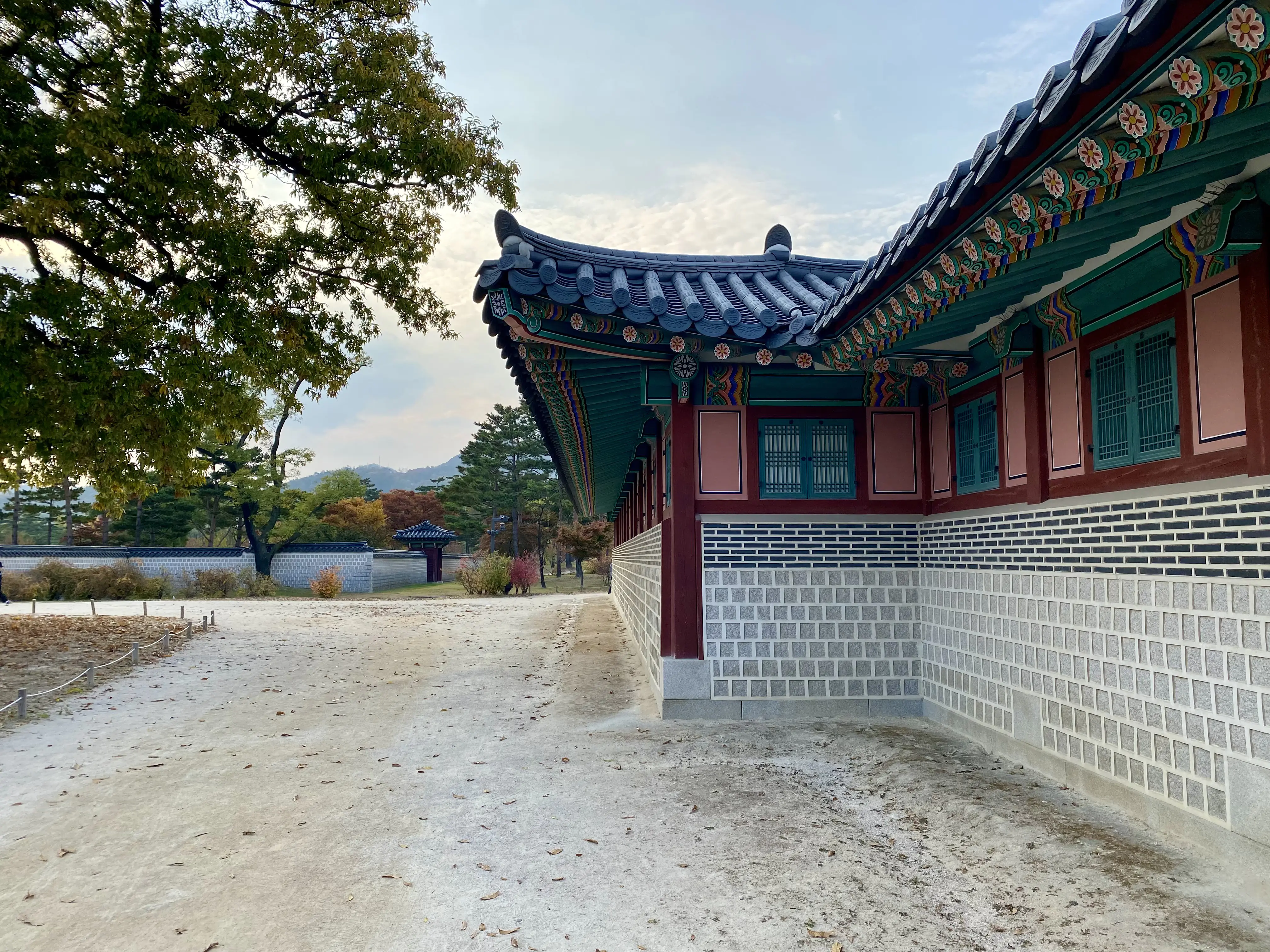
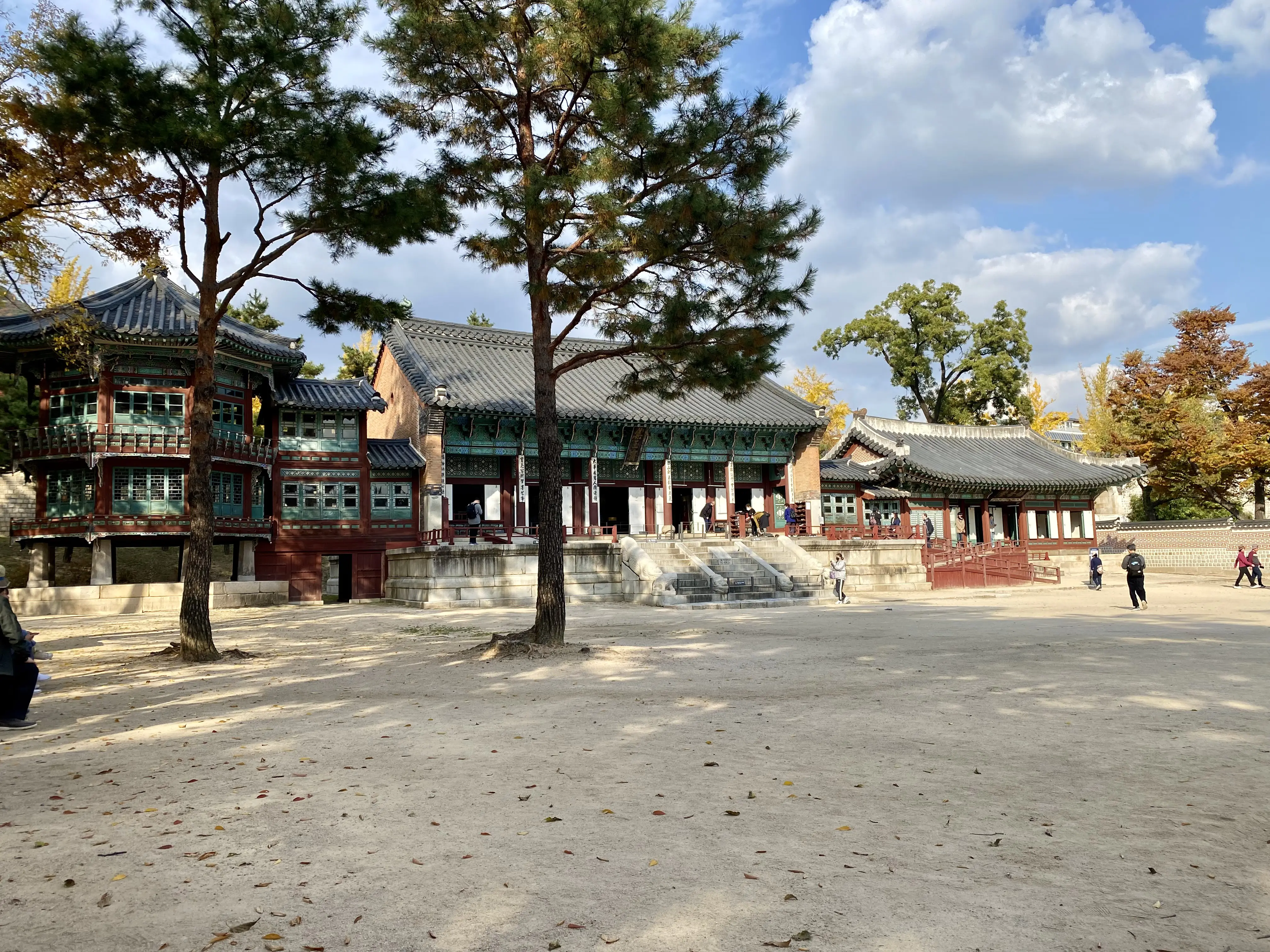
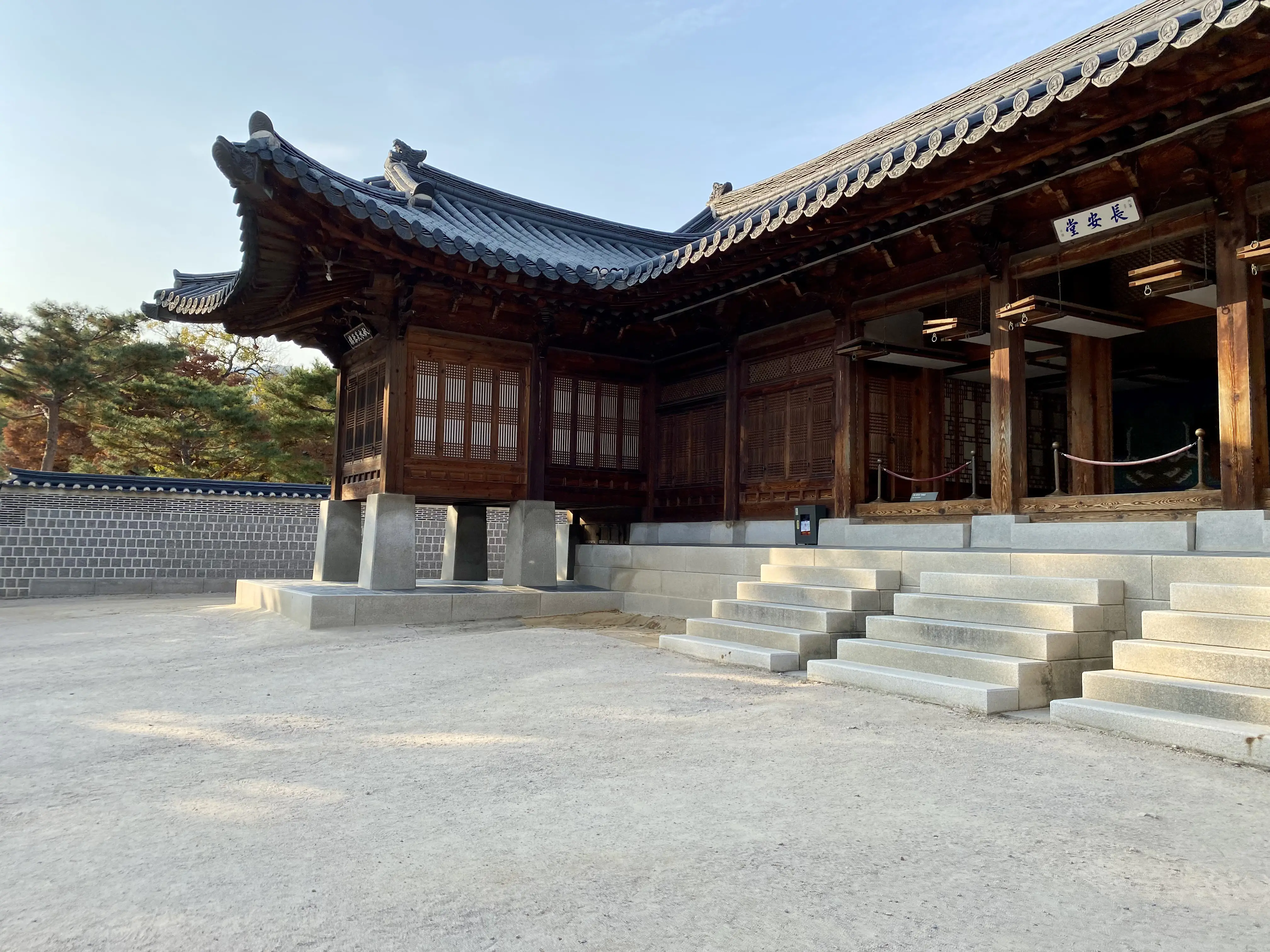
Visit Gyeongbokgung with a guide
In general, guided tours to Gyeongbokgung Palace last between 2 and 3 hours. Some guided tours may include visits to other must-see places in Seoul, such as Bukchon Hanok Village or Jogaesa Temple.
Visiting Gyeongbokgung Palace with a guide has a significant advantage because there are explanations along the visit to the palace’s territory. So, if you are going to visit Gyeongbokgung without a guide, find out about the place’s history in advance.
History of Seoul’s Gyeongbokgung Palace (In Very Brief)
Gyeongbokgung means “Resplendent Palace of Happiness”. It was built in 1394 by the founder and first king of the Joseon Dynasty. Gyeongbokgung is also considered the main palace of the Joseon Dynasty. The reign of this dynasty lasted several centuries, from 1392 until 1910. During this reign, the Korean peninsula experienced great periods of prosperity but also dark periods in its history.
Like other palaces in Seoul, Gyeongbokgung Palace was also destroyed during the Japanese invasions, which took place from 1592 to 1598. It was not rebuilt until 1868. Another palace was considered the main royal palace: Changdeokgung (read more in the article dedicated to this palace).
Unfortunately, after its reconstruction, Gyeongbokgung was destroyed again during the Japanese occupation from 1910 to 1945. Reconstruction began in the 1990s. Today, around 40% of the buildings have been reconstructed. Here are the photos of Gyeongbokgung Palace from 1900.
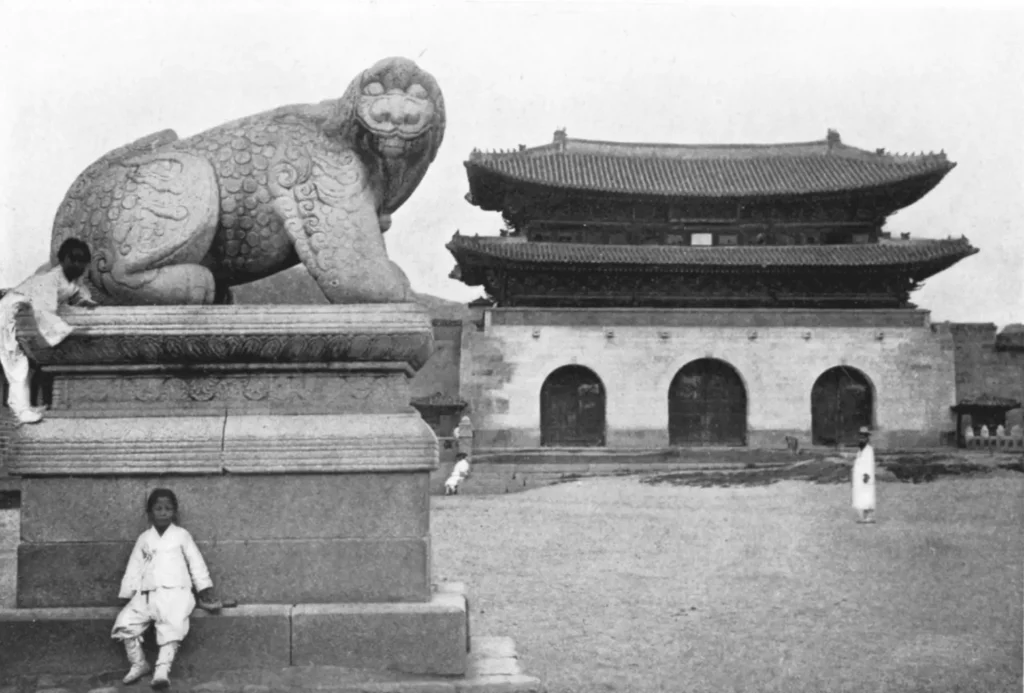
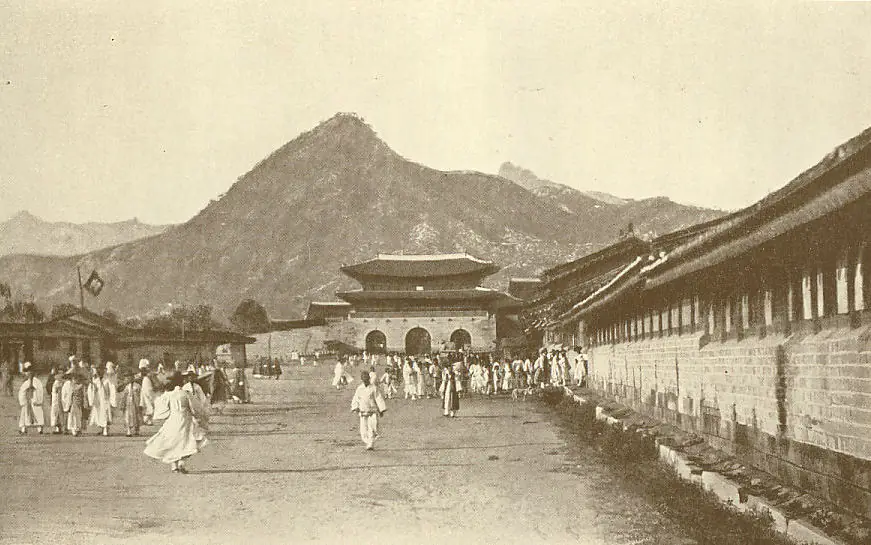
How to get to Gyeongbokgung?
Gyeongbokgung has several entrances. The main entrance is at Gwanghwamun Gate or Gwanghwa Gate, but it can also be convenient to enter or leave through the eastern entrance. The east entrance is near Bukchon Hanok Village, another must-visit place in Seoul.
Many visitors to Gyeongbokgung start at the main entrance, the Gwanghwamun Gate, and end their visit at the Folk Museum by exiting from the east side of the palace towards Bukchon Hanok Village. For this reason, there are many more people at the Gwanghwamun Gate.
To get to Gyeongbokgung Palace, you can take the subway or the bus. If you are going to take the subway, the nearest stations are Gyeongbokgung (Line 3, Exit 5) or Anguk (Line 3, Exit 1). Otherwise, here are the buses that stop near the main entrance (stop: Gyeongbokgung): green buses 109, 171, 172, 601, 606, and blue buses 1020 and 7025.

What to do around Gyeongbokgung?
The location of Gyeongbokgung is a “strategic” location! This palace is close to many exciting places in Seoul, such as Gwanghwamun Square, the Cheonggyecheon Stream, and the Bukchon Hanok Village.
When you visit Gyeongbokgung, you will see the magnificent Gwanghwamun Gate. This gate is in the eponym square: Gwanghwamun Square. Much of this square is now pedestrianized. It is a lovely square to walk in Seoul! From Gwanghwamun Square, you will see Gyeongbokgung Palace from another angle (with the mountain in the background!), as well as the statue of King Sejong and the statue of Admiral Yi Sun-sin.
Gwanghwamun Square winds up to Gyeongbokgung Palace from the Cheonggyecheon stream, another must-see in Seoul!
To the east of Gyeongbokgung Palace is Bukchon Hanok Village. You can visit this place after or before visiting the palace. Several routes are possible depending on the location of your accommodation and the schedule (whether you want to see the changing of the guard ceremony of Gyeongbokgung or not).
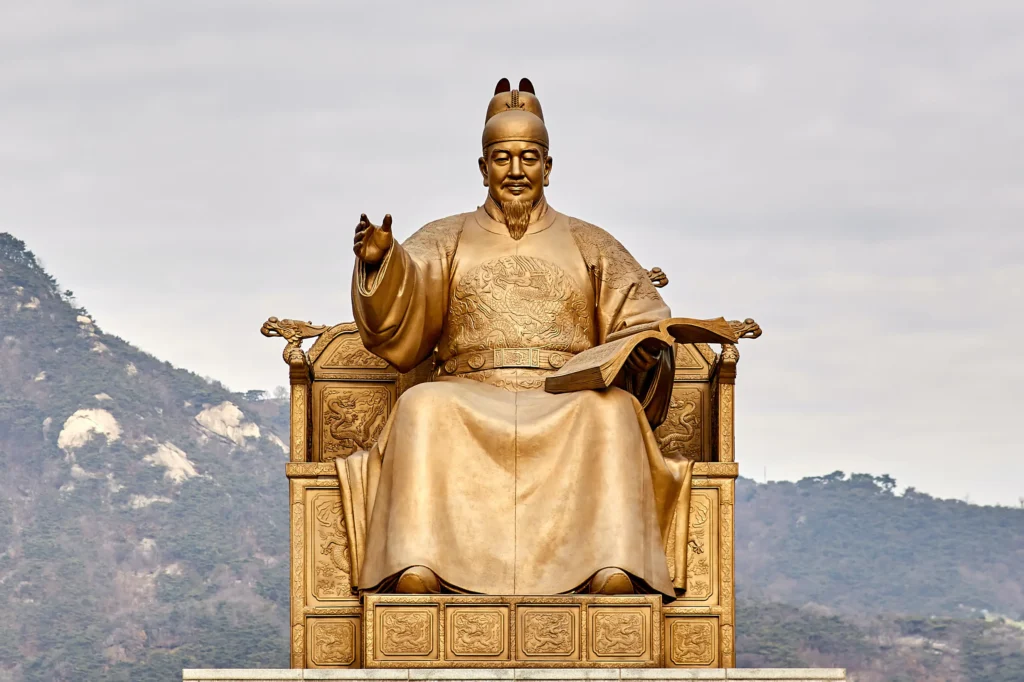
Gyeongbokgung Palace is a beautiful addition to your Seoul travel itinerary. However, if you visit all the royal palaces in just a few days, you may get bored. It is best to visit other places in between to enjoy them more.
For the above reasons, the best time to visit Gyeongbokgung Palace is on weekdays, except Mondays and Tuesdays.
Going from Gyeongbokgung Palace to Bukchon Hanok village on foot is convenient. From the eastern exit, it will take about 15 minutes.
